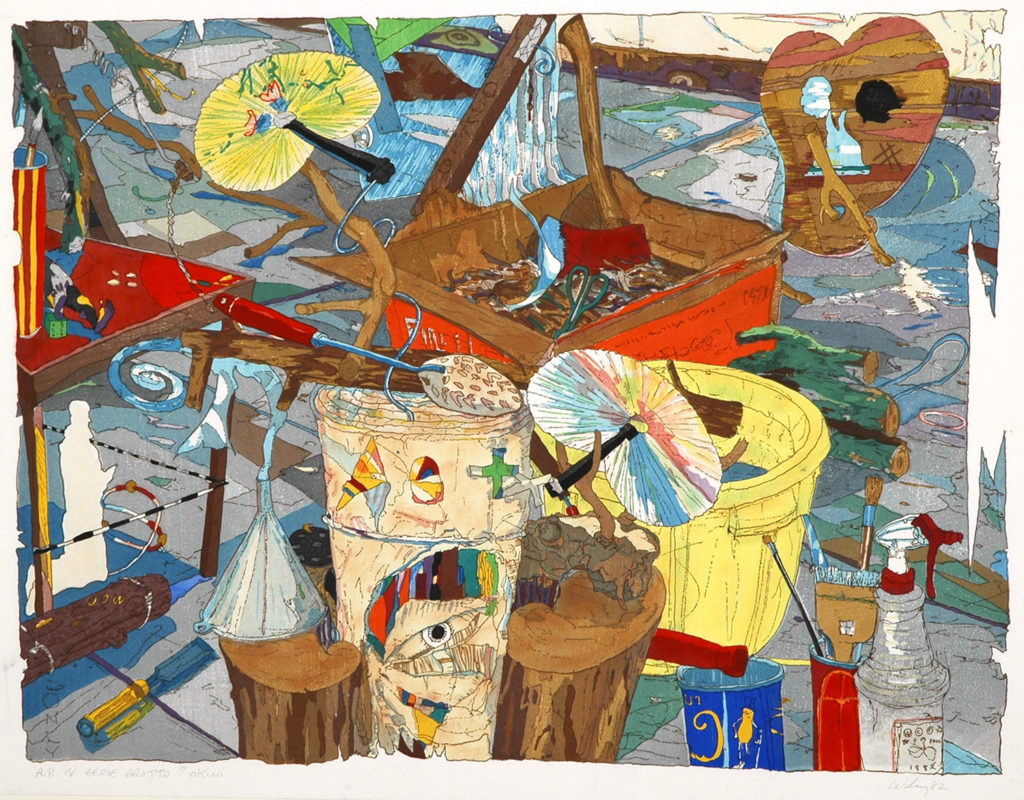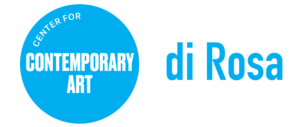
William T. Wiley (American, born 1937), Eerie Grotto? Okini, 1982, color block print on rag paper, 20 7/8 x 27 3/8 inches, Montgomery Museum of Fine Arts, Montgomery, Alabama, Association Purchase, 1999.6
August 20 – October 31, 2021
Step inside the studio of the late William T. Wiley. Fort Phooey: Wiley in the Studio recreates the sights and sounds of his iconic studio—a meeting place for generations of Bay Area artists—combining over fifty original works from di Rosa’s collection with archival objects on loan from the artist’s estate. The “Fort Phooey” part of the exhibition title is taken from a little-known work in the di Rosa collection titled “Fort Phooey Mandala.” Wiley created the mandala as a meditative exercise in his studio, and he also referred to his studio as “Fort Phooey.”
Wiley’s Marin County studio was perhaps his greatest work of art. Densely layered with words, images and objects that meandered into his work and back out again, it was nothing less than an immersive assemblage. “Being in the studio was like entering into a Wiley artwork,” explains curator Kate Eilertsen. “The effect could be dizzying. Every surface was covered with scrawled wordplay, found objects and other elements of his distinctive visual vocabulary.”
Inviting visitors into Wiley’s studio, the exhibition draws attention to the legacy of his artistic practice. “Wiley’s studio practice—rooted in Zen mysticism and an ethos of open-ended play—was imitated by artists ranging from Bruce Nauman to Deborah Butterfield,” states Eilertsen. “To understand his profound impact, it is necessary to grapple with the legacy of his practice as well as the work itself.”
The exhibition is both immersive and participatory, and will include such details as Wiley’s final painting he was working on at the time of his death earlier this year; his workbench; photographs of him with friends and family; works by artists who influenced Wiley’s work including Wally Hedrick; musical instruments he encouraged visitors to play when they visited; National Public Radio (NPR) live via radio; and objects such as chalkboards and dunce caps that often appeared in his two-dimensional and three-dimensional work. Visitors will be prompted to create their own artworks and add them to a community wall inside the exhibition space.
Related Events
Member’s Reception on August 20, 4:30-6:30 PM
Making Art with Everyone / Haciendo arte con todos on September 25 and October 23
Why is it called Fort Phooey?
“Fort Phooey” is taken from a little-known work in the di Rosa collection titled “Fort Phooey Mandala.” Wiley created the mandala as a meditative exercise in his studio, and he also referred to his studio as “Fort Phooey.”
